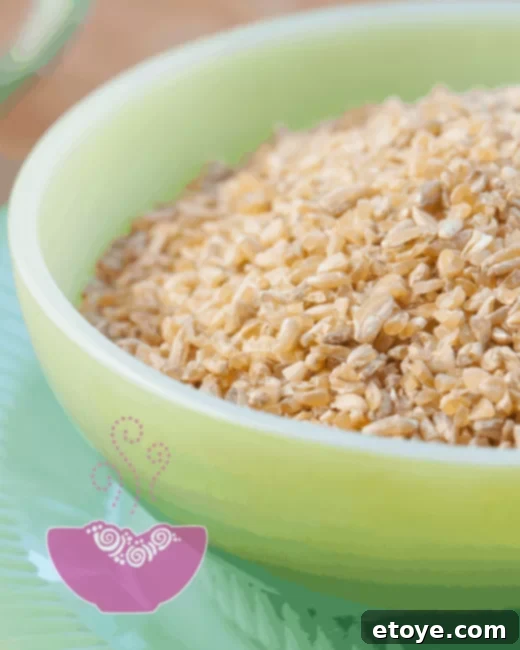Unlock the culinary potential of freekeh, the ancient supergrain! This comprehensive guide will show you how to effortlessly cook freekeh in various ways, ensuring a delicious and healthy base for your Buddha bowls, soups, grain salads, and much more.
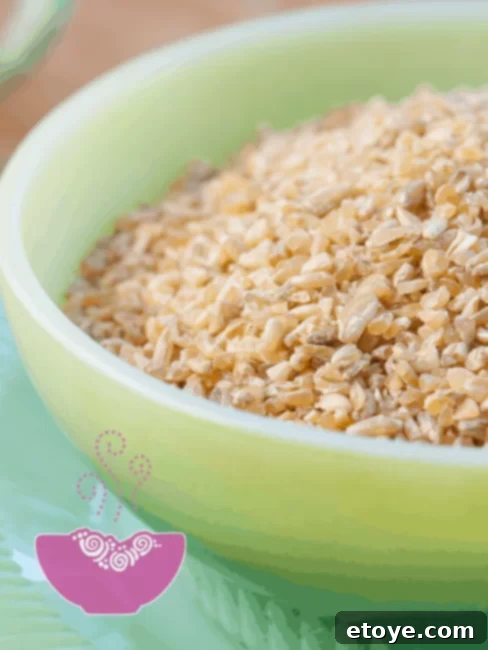
Freekeh, pronounced “FREAK-uh,” is a remarkable whole grain with a rich history and an even richer flavor. Originating from ancient Middle Eastern and North African cuisines, freekeh is essentially young green durum wheat that has been harvested while still soft, then roasted, threshed, and rubbed. This unique processing method imparts a distinctive smoky, nutty flavor and a satisfyingly chewy texture that sets it apart from other grains. It’s typically available in two main forms: cracked and whole. Cracked freekeh, which cooks in significantly less time (around 20 minutes versus 45 for whole-grain), is perfect for those seeking a quick yet nutritious meal without compromising on its impressive health benefits.
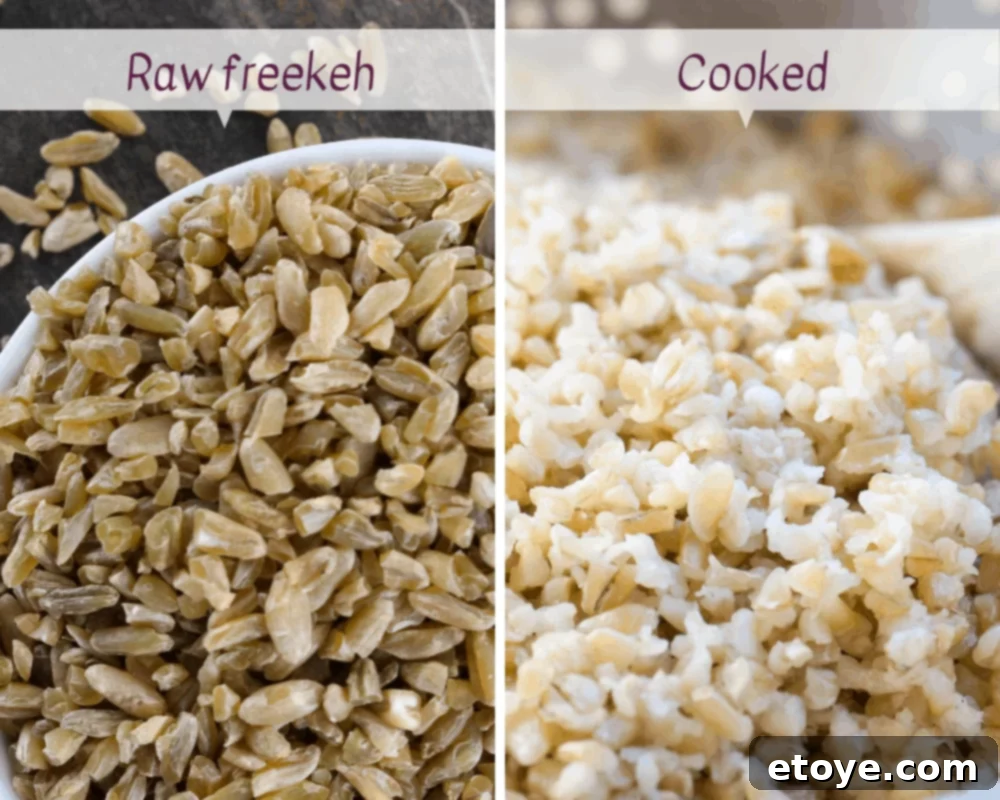
Once a hidden gem of traditional diets, freekeh has steadily gained recognition in Western markets over the past decade. Its rising popularity is no surprise, given its exceptional nutritional profile and incredible versatility in a wide array of dishes. From hearty stews to refreshing salads, freekeh offers a wholesome foundation that elevates any meal. You’ll now find this ancient grain readily available in most well-stocked grocery stores and health food sections.
For more insights into preparing nutritious ancient grains, explore this comprehensive guide to cooking ancient grains.
Why Choose Freekeh? An Ancient Grain for Modern Health
In a world brimming with dietary choices, freekeh stands out as a superior option for many reasons. Its unique qualities make it a compelling addition to any healthy and diverse diet:
- Unforgettable Flavor and Texture: Unlike many bland grains, freekeh boasts a naturally nutty, earthy, and subtly smoky flavor that is genuinely delicious. Its chewy yet fluffy texture provides a satisfying mouthfeel, making meals more enjoyable and fulfilling. It’s a far cry from “tasting like cardboard”!
- A Powerhouse of Nutrition: Freekeh is packed with essential nutrients. It’s an excellent source of dietary fiber, which aids digestion, promotes gut health, and helps maintain stable blood sugar levels. It’s also rich in plant-based protein, making it a valuable staple for vegetarians, vegans, and anyone looking to increase their protein intake. Furthermore, freekeh provides vital minerals like iron, magnesium, and zinc, all contributing to overall well-being and sustained energy.
- Sustained Energy Release: Thanks to its complex carbohydrate structure and high fiber content, freekeh is a slow-digesting grain. This means it releases energy gradually, preventing blood sugar spikes and crashes. It’s an ideal choice for sustained energy throughout your day, keeping you feeling fuller and more focused.
- Quick and Easy Cooking (Especially Cracked Freekeh): While some whole grains can be time-consuming, cracked freekeh cooks remarkably fast, typically in about 20 minutes. This makes it an incredibly convenient option for busy weeknights or meal prepping. Even whole-grain freekeh, while taking longer, is straightforward to prepare.
- Incredible Versatility: Freekeh’s neutral yet distinctive flavor profile allows it to complement a vast range of cuisines. It shines in Middle Eastern and Mediterranean dishes, but also serves as an excellent substitute for rice, quinoa, or couscous in any recipe. Use it as a base for salads, a thickener for soups and stews, a stuffing for vegetables or poultry, or even as a unique breakfast porridge.
- Minimal Fuss and Mess: Unlike smaller grains like quinoa, freekeh grains are slightly larger and less prone to sticking or creating a starchy mess during cooking. This makes for a more pleasant and straightforward cooking experience. (Freekeh: 1; Quinoa: 0.)
- Widely Available: As its popularity grows, freekeh is becoming increasingly easy to find. Look for it in the grains aisle of your local grocery store, in health food sections, or at ethnic supermarkets. Online retailers also offer a wide selection.
Now that you’re convinced of the incredible “why” behind this fantastic grain, let’s delve into the practical “how” of cooking freekeh to perfection!
How to Cook Freekeh: 3 Effortless Methods
Cooking freekeh is surprisingly simple, especially the cracked variety. There’s very little room for error, even for novice cooks. The technique is quite straightforward, similar to cooking rice or quinoa, but with the added benefit of being less messy due to its slightly larger grain size. You’ll quickly master these methods to enjoy perfectly cooked freekeh every time.
For all methods, you’ll generally start with a basic ratio. Here’s what you’ll need:
- 1 cup cracked freekeh
- Approximately 2 cups water or broth (adjust slightly based on desired texture)
- Salt to taste (about ½ teaspoon)
- (Optional) 1-2 tablespoons olive oil or butter for added flavor and richness
Before cooking, it’s a good practice to rinse your freekeh under cold running water in a fine-mesh sieve. This helps remove any dust or debris and can improve the final texture.
1. On the Stovetop: The Classic Method
The stovetop method is perhaps the most common and versatile way to cook cracked freekeh. It yields tender, fluffy grains perfect for immediate use or meal prepping.
Instructions:
- Combine 1 cup cracked freekeh, about ½ teaspoon salt, and 2 ½ cups water or broth in a medium saucepan. The extra liquid here helps ensure even cooking and prevents drying out.
- Bring the mixture to a rolling boil over medium-high heat.
- Once boiling, promptly reduce the heat to the lowest setting, cover the saucepan tightly with a lid, and simmer gently.
- Cook for approximately 15-20 minutes, or until the grains are tender and most of the liquid has been absorbed.
- Remove from heat and let it rest, covered, for 5-10 minutes. This allows the grains to steam further and absorb any remaining moisture.
- Fluff with a fork before serving.
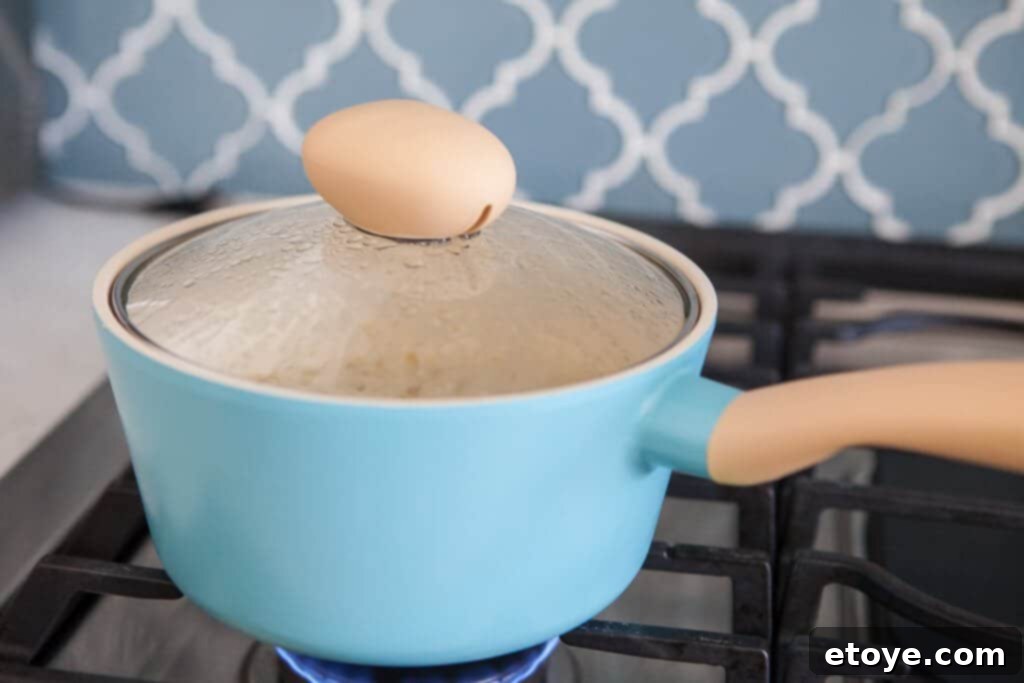
Tip: Adding a spoonful or two of olive oil or butter to the water before simmering can infuse the freekeh with extra flavor and help keep the grains from sticking together, ensuring a fluffy result. This is especially useful if you’re making it ahead of time to prevent it from drying out.
2. Cooking Freekeh in the Instant Pot: Fast and Hands-Off
For a truly hands-off and quick approach, your Instant Pot or other multi-functional pressure cooker is an excellent tool for cooking freekeh. It produces consistently perfect grains with minimal effort.
Instructions:
- Combine 1 cup cracked freekeh and ½ teaspoon salt in the pot of your multi-functional pressure cooker.
- Add 1 ⅔ cups water or broth. The pressure cooker requires less liquid due to reduced evaporation.
- Seal the lid, ensuring the vent is in the “Sealing” position.
- Select the “Multigrain” setting, or set to High Pressure for 10 minutes.
- Allow 10-15 minutes for the cooker to come to pressure.
- Once the cooking cycle is complete, allow the pressure to release naturally for 10-20 minutes. This natural release method helps the grains absorb moisture fully and become tender.
- Carefully open the lid, drain any excess water (though there usually won’t be much), and fluff the freekeh with a fork before serving.
3. In the Microwave: The Ultimate Convenience
When time is of the essence, or you’re cooking a single serving, the microwave offers a surprisingly effective and convenient way to prepare cracked freekeh.
Instructions:
- Place 1 cup cracked freekeh in a deep, microwave-safe bowl.
- Cover with 2 cups boiling water or broth. Using already boiling water speeds up the process significantly.
- Season with salt to taste.
- Cover the bowl loosely with a microwave-safe lid or microwave-safe plastic wrap, leaving a small vent for steam to escape.
- Microwave on High power for 10 to 15 minutes, or until the liquid is absorbed and the grains are tender.
- Check occasionally to ensure the water does not boil over, and stir once or twice if needed for even cooking.
- Once cooked, remove from the microwave, let it stand for a few minutes, then fluff with a fork.
Using a Rice Cooker: If you own a rice cooker, you can also cook freekeh in it. Simply follow the instructions for cooking brown rice, adjusting the water-to-grain ratio to about 1:2.25 (freekeh to liquid) for cracked freekeh.
What About Whole-Grain Freekeh?
If you prefer the heartier chew of whole-grain freekeh, or that’s what you have on hand, the cooking process is very similar but requires more liquid and a longer cooking time.
- For whole-grain freekeh, the stovetop method is highly recommended. Use a ratio of approximately 3 ½ to 4 cups of liquid (water or broth) for every 1 cup of whole-grain freekeh. Bring to a boil, then reduce heat and simmer, covered, for 35-45 minutes. The grains should be tender but still retain a satisfying chewiness. Always check for doneness and adjust cooking time as needed. Let it rest for 10 minutes, then fluff and serve.
- For more detailed instructions on cooking whole-grain freekeh, you can also refer to resources like Greenwheat Freekeh’s cooking guide.
Irresistible Freekeh Recipes and Serving Suggestions
Once you’ve mastered the art of cooking freekeh, a world of delicious possibilities opens up. Its versatility means it can be incorporated into countless dishes, from light lunches to substantial dinners. Here are some inspiring ideas and recipes that truly showcase freekeh’s potential:
- Vibrant Buddha Bowls: Use freekeh as the hearty base for a colorful Buddha bowl, pairing it with roasted vegetables, lean protein (like chicken or tofu), avocado, and a zesty dressing. Try this Rainbow Buddha Bowl Recipe with Tahini-Lemon Dressing for a delightful experience.
- Hearty Salads: Freekeh’s chewy texture makes it an ideal addition to cold grain salads. Combine it with fresh herbs, cherry tomatoes, cucumbers, feta cheese, and a lemon-tahini vinaigrette. This Mediterranean Eggplant & Freekeh Salad offers a unique and flavorful twist.
- Comforting Soups and Stews: Add freekeh to your favorite vegetable or meat soups for extra body, fiber, and protein. Its smoky flavor enhances rich broths beautifully. This Freekeh Vegetable Soup is a fantastic starting point.
- Flavorful Pilafs and Side Dishes: Elevate simple side dishes by sautéing cooked freekeh with onions, garlic, and your choice of spices or herbs. It pairs wonderfully with grilled chicken, fish, or lamb.
- Unique Skillet Meals: Incorporate freekeh directly into one-pan skillet recipes with vegetables and protein for a quick, wholesome meal. The Chicken Freekeh Skillet is a perfect example of a balanced and delicious option.
- Roasted Vegetable Pairings: Serve freekeh alongside roasted root vegetables like carrots, sweet potatoes, or butternut squash, perhaps with a touch of fresh dill as seen in this Freekeh Roasted Carrot Salad with Dill.
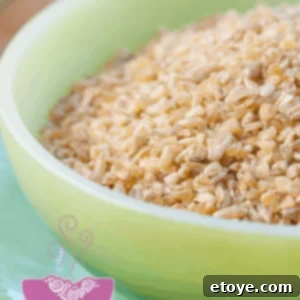
How to Cook Freekeh – 3 Ways
Learn how to cook freekeh on the stovetop, microwave, or in a multi-functional pressure cooker.
Print Recipe
Pin Recipe
Recipe Details
- Prep Time: 2 mins
- Cook Time: 10 mins
- Course: Side Dish
- Cuisine: Middle Eastern
- Servings: 4
- Calories: 130 kcal
Ingredients
- 1 cup cracked freekeh
- 2 cups water or broth (or as specified per method)
- Salt to taste
Instructions
On the Stovetop:
- Bring freekeh, salt, and 2 1/2 cups water to a boil. Promptly reduce heat to low and simmer until grains are tender and liquid is absorbed (approx. 15-20 minutes). Fluff with a fork before serving.
In the Instant Pot:
- Place freekeh in the pot of a multi-functional pressure cooker with 1 2/3 cups water. Seal, select “Multigrain,” and bring to High Pressure over “Normal” setting. Set timer for 10 minutes. Allow 10-15 minutes for the multi-cooker to come to pressure. Release pressure naturally (10 to 20 minutes). Drain extra water and fluff.
In the Microwave:
- Place freekeh in a deep, microwave-safe bowl and cover with 2 cups boiling water. Season with salt. Microwave, uncovered, on High until liquid is absorbed, 10 to 15 minutes. Check occasionally that the water does not boil over. Fluff before serving.
Notes
Stovetop variation for whole-grain freekeh: cook for 35-45 minutes with 3 1/2-4 parts liquid for every part freekeh.
Nutrition Facts (per serving)
- Calories: 130 kcal
- Carbohydrates: 26 g
- Protein: 8 g
- Fat: 1 g
- Sodium: 6 mg
- Fiber: 4 g
- Sugar: 1 g
- Calcium: 24 mg
- Iron: 1 mg
Cooking freekeh is an excellent way to introduce a nutritious and flavorful ancient grain into your diet. With these simple methods, you’ll be enjoying its wholesome benefits in no time. Whether you’re aiming for a quick weekday meal or planning a more elaborate culinary creation, freekeh is a versatile ingredient that truly delivers.
Tried one of these freekeh recipes? Let us know how it turned out in the comments below! Your feedback helps our community of home cooks.
